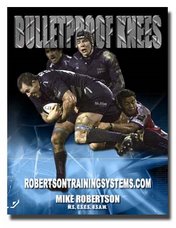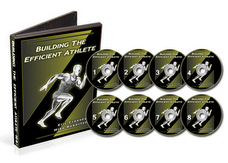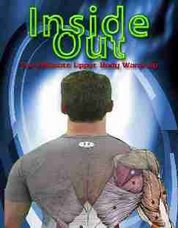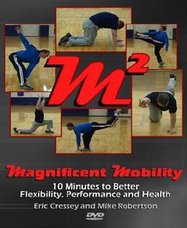Hello Mike,
I have your DVD's and I read on your site, then click links and read into t-nation articles by you and Eric Cressey.
I emphasize kettlebell lifting according to Valery Federenko, and use barbells for myself and high school football players.
I bought the Sahrmann text. At least I can index into it for trouble-shooting. I recognize that you and Eric Cressey are translating functional movement, the next gen functional anatomy, into specific exercises related to the profiling found in Sahrmann and the growing body of tests. I appreciate your efforts to open our eyes to use exercises and lifts as profiling.
In the past few weeks I've been able to make my humeral-acromion gap wider and alleviate impingement in myself, a process I believe to have been greatly accelerated by using beside the face pulls and scaption shrug according to your article with Hartman. At first I used a towel to lift the arm of a chest-supported rower, and then I have begun to make a goalpost with arms, bend over until arms parallel the ground, and then use 1kg and 2kg to do the beside the face pulls and hold for two seconds. That is a fairly unglamorous exercise with cable or chest-supported rower, but to think of a grown man working out with 1kg and getting sore doing it, might sideline it into obscurity as a mere cult ritual. But RESULTS highlight the wisdom of going there.
My 91 years old, and has very little if any cartilage in one hip. I started her doing some of the hip work from your dvd, and step ups on a telephone book or two. Her lunges will start ridiculously shallow, but lunges are next, probably quad lunges not to focus on quad but simply because she can't use a longer stride like the glute/ham lunge variations.
Shoulder and hip mobility and efficiency. Power lift form and efficiency. Learning as much profiling as I can. The benefits of warming up dynamically.
There are two schools of American kettlebell lifting. "Russian kettlebells are all the same size", "kettlebells are not heavy(implications: no powerlifting belt, no deadlift grip, no inhale and hold ab tension, no rectal puckering)". The other school, the one that takes people to less reps by far than kettlebell sport does, has people doing windmills and turkish get-ups for their shoulders. I have recently realized that pushing the scapula down with weight only encourages the muscles to come back stronger with more impingement. If those lifts, windmill and tkg, are not our primary overheads, they add, and perhaps ONLY add, to the deficit. If am trying to help somebody out of impingement, your beside the face pulls, scaption shrug, overhead shrug, added to rowing, would be first, not merely weighing down the scapula for a few seconds like smoking a cigarette to relieve nicotine-based anxiety. Federenko's pulls are swings, cleans, snatches, and pull-ups. I add a few renegade rows, bent-over beside-the-face pulls starting with 1kg plates, scaption shrugs starting with five or ten pounds.
Jerks are a big part of kettlebell sport. We don't do presses except for entertainment. Presses weight the scapula down, reducing impingement, while jerks make the load weightless just when we are threading soft flesh between two bones, so the scapula is not depressed by the load when impingement happens. Jerk takes a healthy, balanced scapular muscle relationship. We are also doing lots of reps and sets of jerks, so as we progress, impingement would block our progress with too much inflammation, sounding the alarm. I could also go into detail about good or bad form relating to impingement and scrubbing shoulder cartilage, but I only wanted to describe in detail how your scapular balancing exercises are so important.
-Bob Dodds
High Octane Corrective Exercise and Performance Enhancement | www.RobertsonTrainingSystems.com
Tuesday, July 3, 2007
Subscribe to:
Post Comments (Atom)









No comments:
Post a Comment